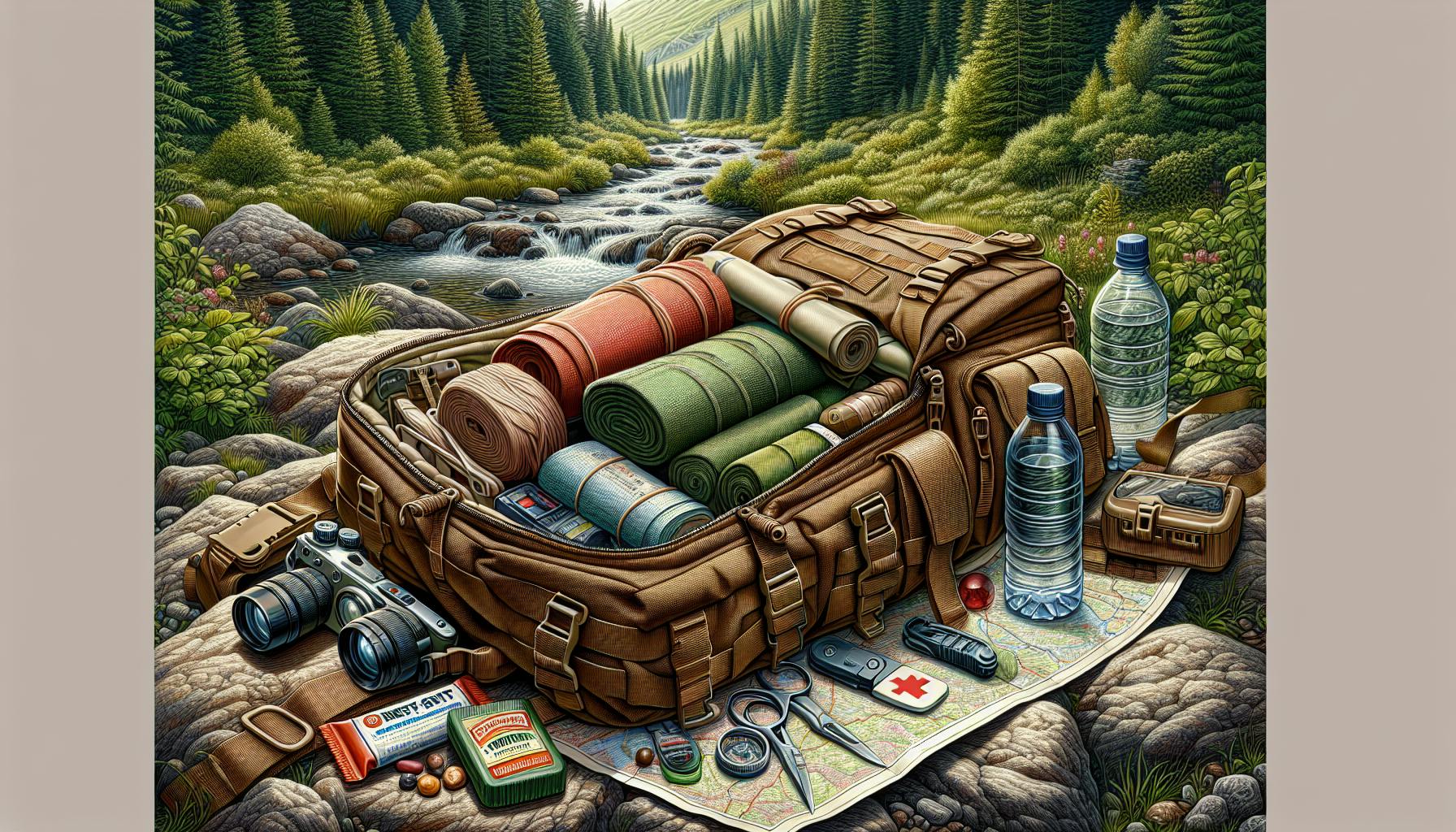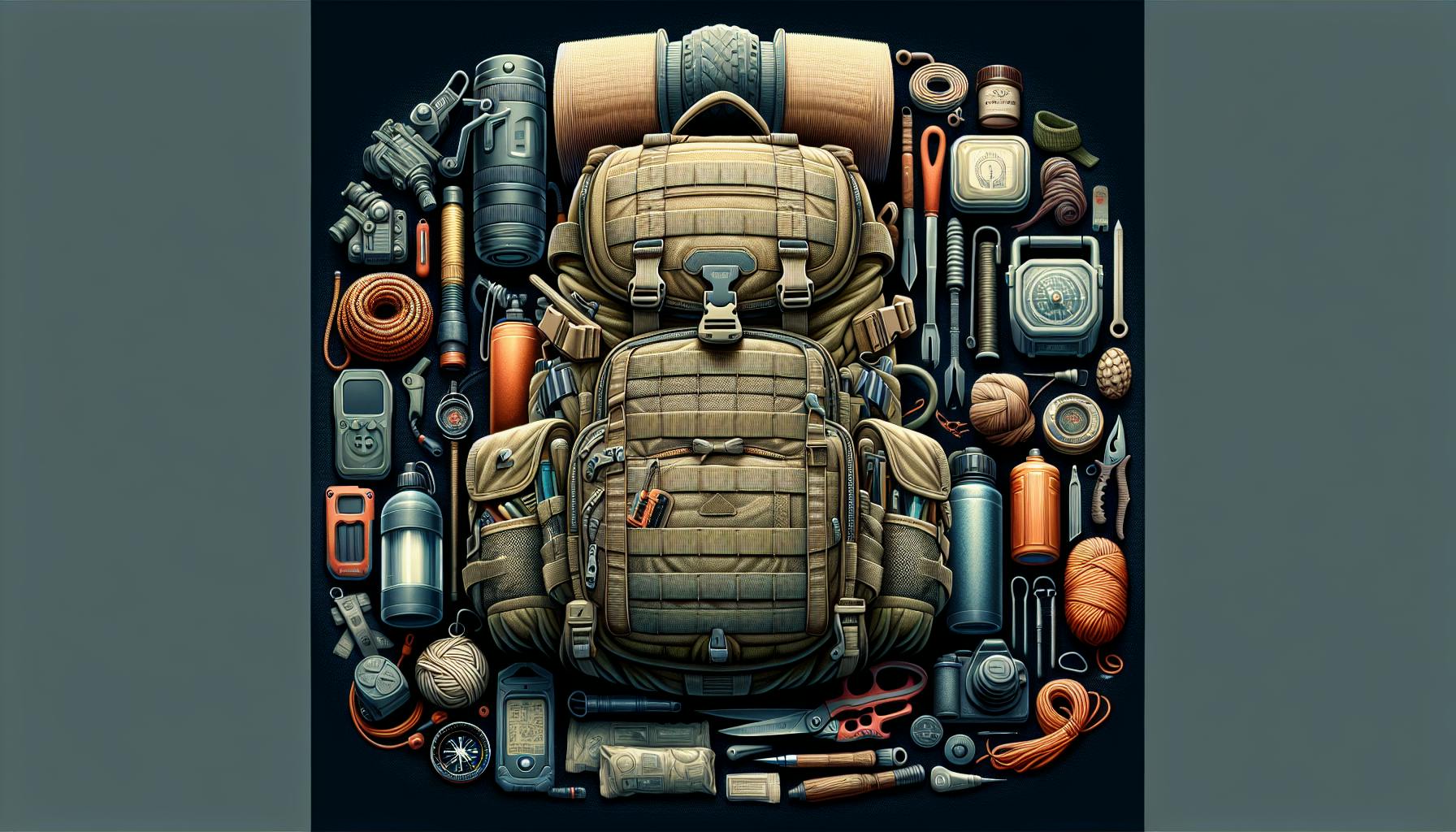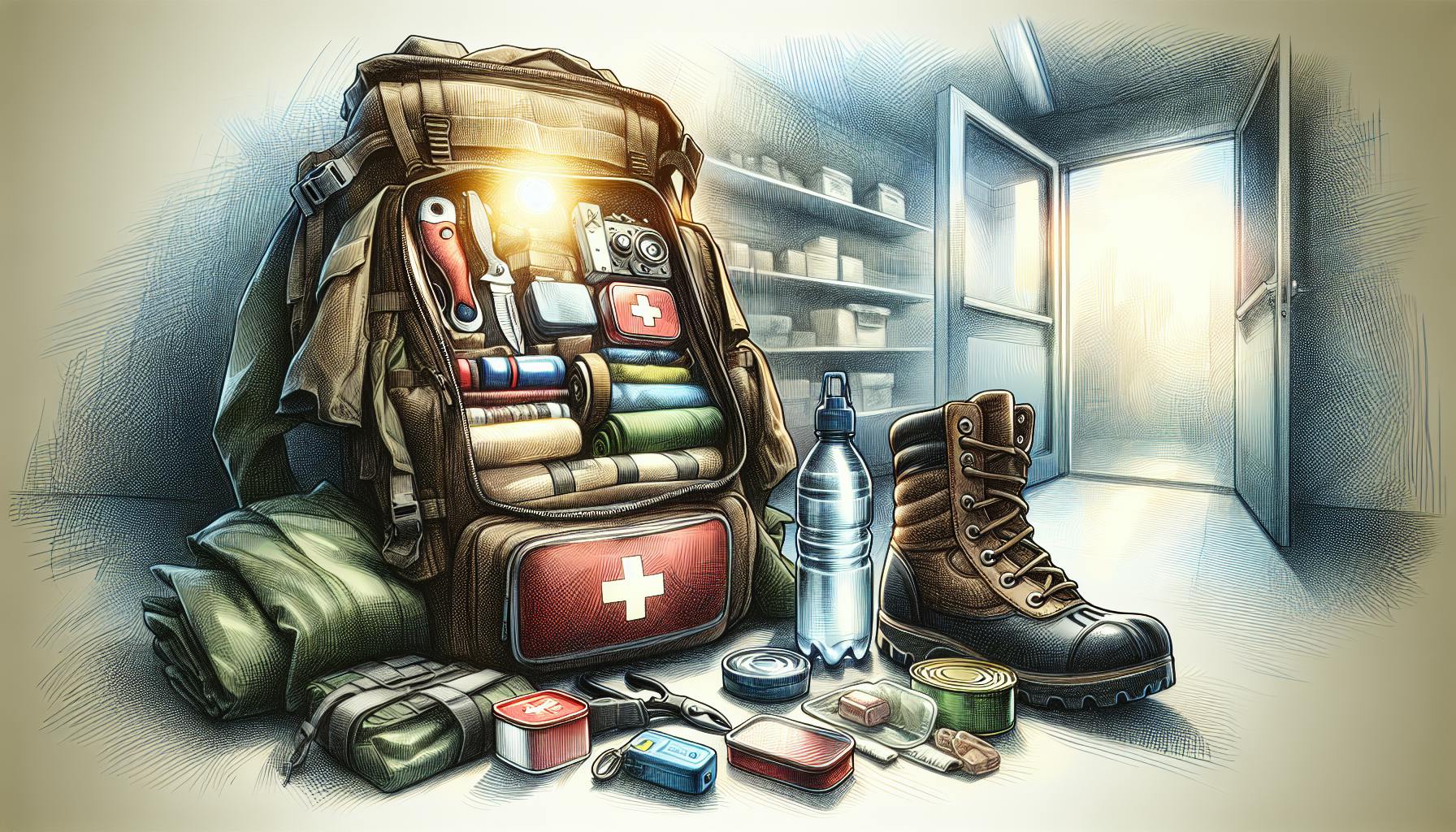Preppers know that having a safe water supply is absolutely critical in an emergency.
In this post, you'll discover the best water purification supplies that preppers rely on to ensure access to clean drinking water when SHTF.
We'll explore trusted filtration systems, chemical purifiers like bleach and pool shock, as well as low-tech options like boiling that will protect you and your family from waterborne illnesses. You'll learn key considerations for building redundancies into your water purification plan, along with tips on storage and maintenance.
Introduction to Emergency Water Purification for Preppers
Having access to safe, clean drinking water is critical in an emergency situation. When normal water sources become contaminated or unavailable, being prepared with effective water purification methods can literally be a lifesaver. This overview covers the key things preppers need to know about securing safe water.
Assessing Your Safe Water Supply Needs
When building an emergency water supply, a common question is "How much do I need?" The general guideline is to store at least one gallon of water per person per day for drinking and basic hygiene. However, consider your household's unique needs as well. For example, account for pets, any medical conditions, children's needs, etc. Also factor in potential disruption durations - short-term vs long-term scenarios.
To determine your basic drinking water needs:
- Count the number of people (and pets) in your household
- Multiply by the expected duration of emergency
- Multiply by minimum of one gallon per person per day
This gives you a reasonable stored water supply target. Just remember to factor in other water uses beyond drinking as well.
Understanding Water Contaminants
Even if water looks clean, it can still harbor dangerous microscopic contaminants - bacteria, viruses, parasites and chemical pollutants. These can cause severe illnesses like Hepatitis A, Giardia or even death if ingested.
Common emergency water contaminants include:
- Bacteria - E. Coli, Salmonella
- Viruses - Hepatitis A, norovirus
- Parasites - Giardia, Cryptosporidium
- Chemicals - pesticides, heavy metals
Safe purification removes or neutralizes these threats, making water potable for drinking and food prep.
Goals of an Effective Emergency Water Purification System
An good emergency water purification system should:
- Remove Contaminants - filter out bacteria and cysts. Disinfect viruses and chemicals
- Portable - lightweight and no power reliance
- Easy to Use - simple operation with minimal parts
- Reliable - proven technology, reputable brand
Finding a system that balances these factors makes meeting your safe drinking water needs in an emergency straightforward and dependable.
What should a prepper stock up on?
When building your prepper stockpile, focus on non-perishable foods that do not require refrigeration and are lower in sodium content. Some good options include:
- Canned goods like beans, vegetables, fruits, soups, meats
- Dried goods like pasta, rice, oats, trail mixes
- Shelf-stable milk, nut butters, jerky
- Water and water purification supplies
You'll also want to stock up on other essential emergency items:
- Flashlights and headlamps with extra batteries
- Battery-powered or hand crank radio
- Manual can opener
- First aid kit
- Copies of important documents
- Cash in small denominations
Depending on your family's unique needs, you may also consider stocking additional supplies like medications, pet food, baby formula, diapers, contact lens solution, etc. The key is tailoring your stockpile to your situation.
When building your prepper stockpile, focus on versatility, nutrition, and shelf life. Store items properly to maximize freshness and rotate stock as needed. With some planning, you can amass a well-rounded stockpile to help weather any emergency situation.
What is the first thing a prepper should buy?
When getting started with prepping, focusing first on building reserves of essentials like water, food, first aid, hygiene items, and sanitation supplies lays the groundwork for survival preparedness.
Water Reserves
Having an emergency supply of safe drinking water is critical. Aim to have at least one gallon per person per day for at least 72 hours. Consider storing commercial bottled water or filling clean containers with tap water. Rotate supplies to ensure freshness.
Long-Shelf-Life Food
Stock up on nutritious food with long expiration dates that doesn't require refrigeration. Think canned goods, dehydrated camping meals, protein bars, nuts, and MREs (Meals Ready to Eat). Prioritize calories and nutrients over taste.
First Aid Supplies
A well-stocked first aid kit can help treat injuries when professional medical care is limited. Essentials include bandages, gauze, tape, antiseptic, pain meds, gloves, trauma shears, and reference guides.
Sanitation and Hygiene
Maintaining health and preventing illness is key. Stock toilet paper, soap, toothpaste, feminine products, and bleach or water purification tablets. Garbage bags, tarps, duct tape, and tools like shovels are useful for managing waste.
Building reserves of water, food, first aid, sanitation, and hygiene items makes a great starting point for every prepper. Invest in quality evergreen products that meet your basic needs during an emergency.
What does every prepper need?
Every prepper should have certain essential supplies in their pantry to ensure preparedness for emergencies or disasters.
Food and Water
Having adequate food and water is critical. Focus on non-perishable, high-calorie foods like rice, beans, pasta, oats, peanut butter, and canned meat or vegetables. Make sure to store at least a 3-month supply and have water filtration/purification methods like lifestraws or water purification tablets.
First Aid Supplies
A well-stocked first aid kit is vital, containing bandages, gauze, medicines, sanitation supplies etc. Know basic first aid as well.
Tools and Gear
Have basic tools like knives, duct tape, tarps, ropes, flashlights, batteries, and a crank or solar powered radio. Specialty prepper gear can also be useful like portable stoves, sleeping bags, tents, and bug out bags.
Self Defense Items
Consider pepper spray, firearms, or other legal self defense items. Know your local laws.
The most critical supplies are food, water, first aid, basic tools and gear. Stack up on these before specialty or defensive items. Rotate and replace items before they expire.
What foods are best for prepping?
When preparing a 3-day emergency food supply, it's important to choose foods that are nutritious, non-perishable, and easy to store. Here are some of the best options to consider:
Canned and Preserved Foods
Canned meats, fruits, vegetables, soups, and stews are convenient prepared foods that have a long shelf life. Canned goods are an essential part of any emergency food stash. Some good choices include:
- Canned tuna, salmon, chicken, beef stew, chili, baked beans, vegetables, and fruits packed in juice rather than syrup.
- Canned milk, evaporated milk, and condensed milk for cooking and baking needs.
- Canned juices and soup broths add flavor and nutrients.
Staples
Basic ingredients like sugar, salt, pepper, cooking oil, corn starch, and spices take up little storage space. Stock up on baking essentials like flour, baking soda and powder. These items expand your meal possibilities.
High-Energy Foods
Compact, nutrient-dense foods that don't require refrigeration are perfect for emergency kits. Some examples:
- Peanut butter, almond butter, jams and jellies
- Whole grain crackers and cereal bars
- Nuts, seeds, and trail mixes
- Nutrition bars and protein bars
- Dried fruits
Focus on shelf-stable foods that pack nutrition, calories, and satiety. Avoid overly processed snack foods with low nutrient value. With the right selection of preserved, staple, and high-energy foods, you can assemble nutritious and satisfying emergency meals.
sbb-itb-b932644
Choosing the Best Filtration Systems for Preppers
When preparing for emergencies, having access to safe drinking water is critical. Filtration systems are an effective way for preppers to ensure a reliable supply of potable water. There are several types of filters to consider, each with their own advantages.
Ceramic Survival Water Filters
Ceramic filters excel at removing bacteria, protozoa, and cysts from water. The porous ceramic effectively traps contaminants while allowing water to pass through.
Pros:
- Effectively filter out bacteria and protozoa
- Long lifespan if properly cared for
Cons:
- Heavy and fragile
- Limited chemical filtration
- Slow flow rate
Carbon Block Filters
Carbon block filters use activated carbon to remove chemicals, heavy metals, and odors from water. The carbon has a large surface area that absorbs impurities.
Pros:
- Excellent chemical filtration
- Fast flow rate
- Lightweight
Cons:
- Limited particulate filtration
- Carbon must be replaced over time
Specialty Emergency Water Filters
There are proprietary water filters designed specifically for emergency preparedness situations. These often combine multiple filtration methods into a portable, high-performance system.
Pros:
- All-in-one filtration system
- Fast flow rate
- Durable and portable
Cons:
- More expensive
- Replacement filters required
When selecting a water filter, preppers should consider their budget, portability needs, and which contaminants are priorities in their region. Combining a ceramic filter for particulates with a carbon filter for chemicals can provide comprehensive filtration for survival situations.
The Role of Purification Tablets in Prepper Water Storage
Purification tablets are an essential component of any prepper's water storage plan. These small tablets use chlorine dioxide or iodine to kill harmful pathogens, providing a simple way to ensure your stored water is potable during an emergency.
How Purification Tablets Work
Water purification tablets work by releasing sterilizing agents into water that destroy bacteria, viruses, and protozoa. The active ingredient then works to rupture cell membranes and disrupt essential functions. After the right contact time, the water becomes safe to drink.
Most purification tablets use either chlorine dioxide or iodine. Chlorine dioxide works quickly and is effective against cryptosporidium. Iodine works a bit slower but has a longer lasting effect. Both neutralize giardia, E. coli, salmonella, rotavirus, and other common waterborne pathogens.
Effectiveness Considerations for Purification Tablets
There are a few key factors that impact how well purification tablets work:
- Water Quality - Turbid or cloudy water reduces effectiveness. Use a pre-filter or let sediment settle before adding tablets.
- Contact Time - Cold water needs 30+ minutes contact time. Warm water only needs 15 minutes.
- Expiration - Tablet strength fades over time after the expiry date. Replace them every 2-3 years.
- Taste - Some people dislike the slight chlorine or iodine taste. Adding neutralizer tablets helps.
So as long as you account for these considerations and follow the instructions, purification tablets effectively sanitize stored water for emergency preparedness.
Recommended Purification Tablets for Emergency Kits
Some top purification tablet brands to include in survival kits are:
- Potable Aqua Water Purification Tablets with PA+ neutralizer tablets - provides complete treatment solution.
- Katadyn Micropur Purification Tablets - 30+ year shelf life.
- Aquatabs Water Purification Tablets - easy to use and transport.
- Emergency Drinking Water Tablets by Survive2Thrive - convenient 36 tablet packs.
The small, lightweight nature of tablets makes them an ideal choice alongside water filtration systems as part of a layered, redundant emergency water plan. Having both purification methods ensures access to safe drinking water in disasters.
Bleach and Pool Shock for Emergency Water Filtration
Bleach and pool shock (calcium hypochlorite) can be effective options for emergency water disinfection when proper purification methods are unavailable. However, proper dosing and safe handling are extremely important.
Bleach Treatment Ratio
Household bleach contains sodium hypochlorite, which can inactivate harmful microorganisms when used correctly. The standard emergency treatment ratio is:
- 8 drops of bleach per gallon of clear water
- 16 drops per gallon of cloudy water
Only use regular, unscented bleach without added cleaners. Thoroughly mix and allow 30 minutes for disinfection before drinking. Bleach breaks down over time, so replace every 12 months.
Pool Shock as an Alternative for Safe Water Supply
Calcium hypochlorite pool shock works similarly to bleach. Benefits include a longer shelf life (2 years) and smaller storage space for the same disinfecting power.
Correct dosing is critical:
- 1 heaping teaspoon of powder per 5 gallons of clear water
- 2 teaspoons per 5 gallons of cloudy water
Stir vigorously and wait 30 minutes before consuming. Use only food-grade pool shock without algaecides or clarifiers.
Storage Concerns for Chemical Purifiers
When stockpiling bleach or pool shock for emergencies:
- Store in cool, dry, dark conditions to maximize shelf life
- Check expiration dates and replace as needed
- Wear gloves and eye protection when handling
- Keep out of reach of children and pets
- Have plenty of clean water available for dilution
Use both bleach and pool shock safely by understanding correct dosing. When stored properly, they can be vital preparedness tools for emergency water purification.
Boiling as Emergency Disinfection for a Safe Water Supply
Boiling is one of the most effective methods for ensuring a safe water supply during an emergency. By heating water to a rolling boil for 1-3 minutes, harmful bacteria, viruses, and parasites can be killed, making the water safe to drink.
Effectiveness Against Pathogens
Boiling water is highly effective at killing dangerous pathogens like E. coli, Salmonella, Giardia, and Cryptosporidium. Water should be brought to a full rolling boil for 1 minute to kill most bacteria and viruses. Boiling for 3 minutes will kill more resistant parasites. [purification tablets] can also be used in conjunction with boiling to improve disinfection.
Considerations for Practical Use of Boiling
While boiling is an accessible prepper water purification method, there are some limitations to consider:
- Fuel and power - Requires a heat source like a camp stove or fire. This may not be feasible long-term without sufficient fuel or during power outages.
- Time - Boiling a large volume of water can be time consuming, especially if relying on a small camp stove. Larger pots on an open fire may boil faster.
- Quantity - Boiling small batches may be unrealistic for all drinking, cooking, and hygiene needs. Storing excess boiled water may be necessary.
Improving Taste and Safety Post-Boiling
Additional steps can make boiled water more palatable and safer:
- Pre-filtering with a [filtration system] removes sediment and improves taste.
- Allowing boiled water to cool and sit open to the air can improve flavor.
- Running cooled boiled water through an activated carbon filter or adding crushed charcoal can remove unpleasant tastes and odors.
- Storing boiled water in clean, sealed containers helps prevent recontamination.
Boiling is an effective water purification technique that kills pathogens, but does have some practical limitations prepper's should consider regarding fuel, time, quantity boiled, and water taste/quality.
Portable Water Purifiers: Ultraviolet Options
Ultraviolet (UV) water purification is an effective method for killing harmful pathogens in water. Portable UV purifiers provide a convenient way to disinfect water while hiking, camping, or in emergency situations.
Understanding UV Disinfection
UVC light damages the DNA and RNA of viruses, bacteria, protozoa, and other microorganisms, rendering them unable to reproduce or infect (1). This makes UV disinfection highly effective at inactivating many biological contaminants in water. The optimal wavelengths for disinfection are between 250-270 nm.
Most portable UV water purifiers use either low-pressure or medium-pressure mercury vapor lamps to generate germicidal UVC light. Low-pressure lamps emit light at 254 nm, while medium-pressure lamps have a broader spectrum with more intensity.
Power Source Options for Portable Water Purifiers
There are several power source options for portable UV water purifiers:
- Battery-powered: Rechargeable or disposable batteries allow use off-grid. Lithium-ion batteries provide the longest runtime.
- Electric: Purifiers can plug into AC outlets, solar panels, or car outlets for on-demand disinfection without batteries.
- Manual pumping: Some models use mechanical pumping to pass water by the UV lamp without electricity.
Battery and manual units offer independence from external power, while electric models provide unlimited runtime.
Sizing and Flow Rates for UV Water Purification
When selecting a UV purifier, consider:
- Light intensity: Measured in microwatts/cm^2. Higher intensity increases disinfection performance.
- Water clarity: Turbid water can shield microbes from UV exposure. Pre-filtration helps.
- Flow rate: Faster flow rates can reduce exposure time. Target at least 2 gal/min pump rate.
- Batch treatment: Smaller units can disinfect water in batches instead of continuous flow.
Higher light intensity, slower flow rates, and clear input water all help ensure complete disinfection.
1: EPA - Ultraviolet Disinfection
Final Tips on Building Your Prepper Water Purification System
Combining Multiple Water Purification Methods
Having multiple methods of water purification in your prepper supplies can provide critical redundancy in an emergency. Consider layering a filtration system with chemical disinfection tablets. The filtration removes sediments and microbes, while the tablets kill any remaining bacteria or viruses. This combined approach improves the safety and palatability of questionable water sources. Choose complementary products that work well together.
Importance of Redundancies in Water Purification
No single water purification method is foolproof. Filtration elements can crack or clog over time. Tablets have limited shelf lives. And all equipment is subject to unexpected failures or capacity overloads in a crisis. Building redundancies into your water prepper supplies boosts resilience. Have backup filters, spare parts, and alternate disinfection options on hand. Store purified water as an emergency buffer as well. Redundancy brings peace of mind that your water security won't have a single point of failure.
Testing and Maintenance of Water Purification Equipment
The best prepper water purification gear is useless if not properly maintained. Follow all manufacturer guidance on cleaning filters and replacing worn parts. Check expiration dates for chemical disinfection tablets and survival food. Set reminders to periodically test your equipment using manufacturer protocols. Rotate stock to use older items first. Keep detailed logs of maintenance and testing. Failing to keep your critical gear in working order jeopardizes your self-reliance when you need it most.


